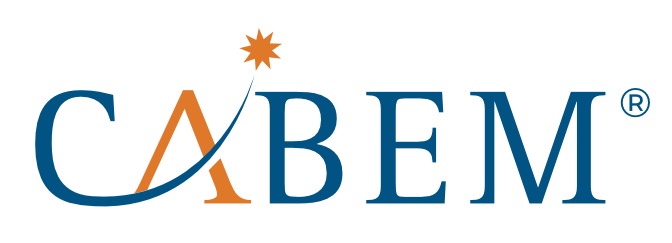A Closer Look at the Evolution of the Skills Matrix
The skills matrix has become a vital tool in any organization’s Competency Management Program for tracking skills, training, certification, and qualifications for employees. It is a visual tool that identifies key skills in specific roles and recognizes the competency level for each skill for individuals. An effective matrix can boost the skill and efficiency levels within a company. This management tool can be used in small and large organizations to measure and understand the skills within the workforce. Both individuals and businesses must be aware of their overall skill level, as well as have knowledge of desired areas of growth. In order to understand the value of automating the process, let’s look back at the history and growth of the skills matrix in the workplace, as well as the benefits of using automating in an organization.
It All Started With Spreadsheets and Qualification Cards
Monitoring employee compliance and skills is not a new expectation in the workplace. However, it has not always been as easy and automated as it can be today. Historically, spreadsheets were used to share the progress towards compliance by mapping different groups within the organization. This has long been a requirement of highly regulated industries.
Qualification cards were kept to monitor the skills of employees in different roles within the organization. These documents showed proof that employees were meeting requirements and were an efficient tool when audits came around. Then the cards were used to map different groups within the organization. Starting at a broad level, the organizational requirements were met. For example, all employees must read the employee handbook. At the regional level, the employees must meet state law compliance expectations. Within any department, safety training takes place and must be documented. Finally, in any job role, it is important to determine what the workers need to know to perform their job well.
With so many requirements involved, organizations began to adopt a competency-based framework in order to provide a balanced approach to mapping the organization. This framework worked to standardize the requirements across roles. It gave a top-down view of everything that is required in a job role. A competency-based program is able to look at progress towards completion for each of the roles and requirements with the Dreyfus model. This tracks progress using a 1 -5 proficiency rating that progresses from novice to subject matter expert that has the ability to train others or progress can be monitored with more traditional confirmation methods.
The qualification cards and competency management spreadsheets are effective ways to keep track of the competencies in an organization. The drawback is that they must be manually maintained. An automated software system, like CABEM’s Competency Manager, was specifically designed to compensate for the shortcomings of the manual upkeep of competency management. All of the proof for training, certifications, and qualifications are kept in real-time and in one place.
6 Top Benefits of A Skills Matrix
The skills matrix is a core management tool in any organization. There are so many benefits that ultimately lead to the success of individuals and teams at any level in an organization.
- Determine Areas that Need Improvement – Managers are able to determine which areas employees are performing well in, and which areas need improvement. Identifying skills gaps is crucial to the productivity of an organization. A skills matrix can highlight deficiencies in skills and expertise, prompting appropriate and productive training. The purpose is to gain insights regarding employee performance.
- Streamline the Hiring Process – Information from the matrix can be used to analyze the strengths and weaknesses of an organization. This can provide justification for hiring or recruiting for a specific skill set. When an employee leaves a company, the matrix provides valuable information regarding the skill set that will be lost and who the next hire should be.
- Obtain a Baseline of Employee’s Competencies – The matrix provides a visual tool for determining teams’ abilities across the organization. It can be used to determine similar skill levels among employees and to create learning pathways for increasing skill sets. Training needs can also be determined for various roles within the company.
- Monitor progress in Professional Development – A clear picture of growth in individuals, as well as with teams, can be determined. Professional training and achievements are documented in one place. The number of skills learned and mastered can be used to determine the next steps in professional development. The matrix can also be used to evaluate the effectiveness of the organization’s training programs. It can be used to map out career routes. Employers can define learning objectives and arrange training outcomes more effectively and efficiently if they can detect where potential skills and competency gaps exist within a business.
- Manage a Workforce – The skill matrix helps organizations fulfill the competency goals established and form teams based on varying skill sets. Employee experience is clearly displayed using this competency tool, allowing opportunities to identify coaches and mentors in specific areas of need. Opportunities for internal mobility within the organization can also be determined. Employers are able to manage a workforce by maximizing productivity, creating staff schedules, and predicting training needs. They can identify the talents and qualifications of their staff at a glance.
- Provides Clear Expectations For All – The skill matrix provides managers with a snapshot of where the staff currently is and what their potential is for advancement. Employees gain a clear understanding of the responsibility they play in the company and what is expected of them. Transparency is provided and everyone sees where they fit within the overall organization and what is needed for them to work to their full potential.
The skills matrix clearly benefits the productivity, efficiency, and communication in an organization. It provides a clear vision and allows the company to work like a well-oiled machine. Feeling confident, challenged, and valued are key factors in keeping employees happy. They expect tailored learning opportunities, clear expectations and communication, and meaningful task allocation. The skills matrix provides these conditions and is a valuable tracking tool for competencies and certifications.
The Value of an Automated Competency Management System
An automated skill matrix as part of a competency-based training program can be used to track, measure, and visualize data in real-time. It allows organizations to gather a balanced and successful team in which everyone has their strengths and weaknesses. Finding people with complementary competencies will improve employee engagement and job performance.
CABEM’s Competency Manager includes powerful reporting capabilities out of the box. Their skills matrix, called the interactive Activity Grid, is a skills inventory that makes it easy to zero in on user progress toward completion. The Activity Grid allows Managers, Mentors, and System Administrators to view the details of a user’s progress for all assignments, as well as the ability to act through approval signoffs, assessments, and multiple other actions right from within the same screen. Discriminating filters provide the most efficient way of accessing important business intelligence in real-time.
If training and quality assurance are top priorities for your organization, but your competency management doesn’t feel credible, isn’t repeatable, or leaves your team feeling uneasy as they prepare for audits, CABEM can help. If you would like to learn more, please visit our website and schedule a call today.

